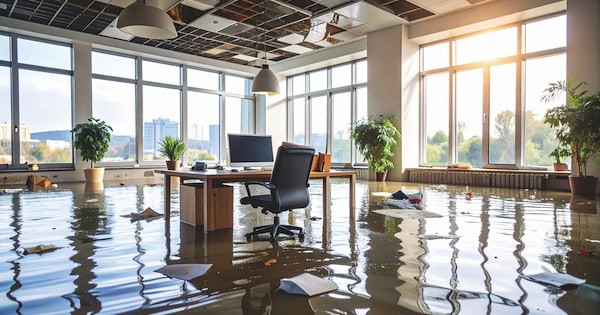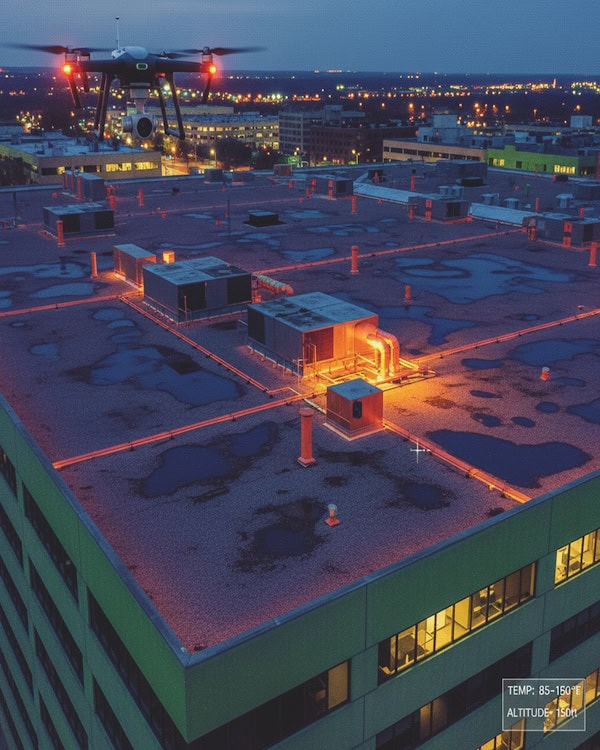Cracks In The Armor: 5 Warning Signs To Never Ignore

In a construction market that’s booming, you would expect to see buildings rising stronger and smarter than ever. But scratch beneath the surface, and a different reality appears. As contractors scramble to meet demand and skilled labor becomes harder to find, construction defects are not just common; they’re quietly costing building owners millions.
For building owners and managers of commercial or multi-family buildings, this one area demands more attention than most: the building envelope.
If the building envelope—the walls, roof, windows, doors, balconies, foundation, and everything else that keeps the elements out—fails, so does everything inside. Water damage, structural issues, and mold can develop inside, creeping in from a compromised envelope.
The good news is that many of these failures wave red flags well before they reach critical mass. The caveat is that you must know what to look for. There are five most common warning signs that your building envelope may be under threat.
Water Intrusion: When You See It, Act Immediately
Water is stealthy. It doesn’t knock before entering, and once inside, it rarely leaves without a fight. What may seem like a harmless stain on a ceiling tile could be the symptom of a much larger envelope failure.
Often, the true source of water intrusion isn’t obvious. It may be traveling from a poorly sealed window on the third floor before dripping through a light fixture on the first. That’s what makes it so dangerous. It’s not just unsightly; it can propagate along building elements above and travel great distances.
Mold, corroded structural steel, rotted structural lumber, deteriorated concrete, and damaged finishes are just a few of the issues that follow when the envelope fails to keep moisture out. And once deterioration begins, repairs become more complex and more expensive by the day.
Never ignore a leak, no matter how small. It’s rarely an isolated problem.
Cracking And Gapping: The Building Is Talking
If water is stealthy, cracks are loud. They may appear in stucco, drywall, masonry, and specifically around window and door frames. Some cracks result from natural building movement or material expansion and contraction, but others suggest much deeper problems, including shifting foundations, structural stress, or breaches in building envelope components.
The pace and pattern of a crack matter. A minor hairline may be harmless. But when gaps widen, change direction, grow in length, or appear alongside moisture, it’s time to bring in a forensic engineer. These experts specialize in diagnosing whether a crack is cosmetic or catastrophic.
Some of these cracks are minor and expected, but the ones that worsen in time are most commonly associated with building movement, moisture intrusion, or some form of degradation that must be taken seriously.
Bad Drainage And Poor Grading: A Threat From The Ground Up
When people think of water problems, they often start looking for leaky roofs or faulty flashing. But some of the worst water-related failures begin from the ground.
The number one source of soil-caused foundation movement is a change in the moisture content of the soil supporting the foundation. The soil can consolidate (shrink), erode, or even expand when exposed to increased moisture. Expansive soils can induce some of the most significant pressures on a building that it will ever be exposed to, greater than snow, wind, or seismic loads. This is why a multi-story concrete building can be lifted, causing distress and damage throughout the entire structure.
In the mountainous and colder regions of the U.S., moisture in the soil can also freeze and expand, creating lifting pressures that cause damage to structures, foundations, and perimeter concrete walkways.
Even a perfectly constructed envelope can’t protect a building from mismanaged stormwater. That’s why site grading and drainage planning aren’t just landscaping details, but structural insurance policies.
After construction, ongoing maintenance is key. Overflowing gutters, clogged drains, or eroded swales can slowly undo even the most careful sitework.
Premature Material Failure: When “Good Enough” Isn’t
There is pressure today to build faster and cheaper, which often results in compromised material quality. However, substandard or mismatched materials not only wear out faster, but they can also actively compromise the building envelope.
Sealants that degrade after one summer of UV exposure, cladding systems that absorb rather than repel water, or incompatible metals that corrode at contact points are critical problems that show up in buildings across the country, often just a few years after completion. Sometimes the materials themselves are fine, but they were installed incorrectly. At other times, the products were never suitable for the climate to begin with. Either way, the result is the same: envelope failure and costly repairs.
When wanting durability, you don’t have to overbuild, but it is essential to make informed choices. That starts with architects, engineers, and contractors who understand the demands of the local environment and who follow manufacturer installation guidelines.

Invisible Clues: Technology Is Changing What We Can See
Not all envelope issues announce themselves with cracks or water stains. Some hide in the thermal gaps, air voids, or structural misalignments that can only be seen with technology.
Fortunately, today’s building diagnostics are more powerful than ever. Drones can safely inspect rooftops, balconies, and façades without the need for scaffolding. Thermal imaging can detect insulation voids or hidden moisture inside walls. 3D laser scanning can capture every square inch of a structure and render a digital twin, allowing engineers to spot even the most subtle deformations or anomalies. These tools save time and reduce guesswork. For building owners, they provide early answers and clear documentation. For engineers, they enable precise, targeted recommendations. And in a legal dispute, they offer evidence that’s hard to ignore.
The envelope may be failing, but you don’t need to tear down walls with today’s technology to find out.
It’s More Than Maintenance—It’s Mindset
These five warning signs are more than defects; they’re signals. Each one is a message from the building that something isn’t right.
Too often, property owners wait for visible damage before acting. By then, it’s a major repair job, or worse, a full legal battle. However, early detection, backed by technology and expert insight, can prevent minor issues from escalating into major problems.
As the industry grows, so does the risk of cutting corners through rushed schedules, unskilled labor, or budget-driven compromises. That’s why vigilance is needed.
The Bottom Line
The building envelope is your property’s armor. If that armor fails, everything inside is at risk. So, whether you’re overseeing a new construction project, managing an aging commercial asset, or just keeping a watchful eye on maintenance costs, learn to spot the signs. Don’t ignore a water stain, write off a crack, or assume pooling water is “just the landscaping.”
The sooner you listen to what your building is telling you, the sooner you can fix what’s wrong and protect what’s right. Your structure’s issues are just like early cancer detection; when the problem is caught and addressed early, you have a better prognosis. In the case of a building, you save both time and money.
By Stanley Stoll, M.Eng., PE
From the October 2025 Issue
Stoll, M.Eng., PE, CEO, and principal engineer of Knott Laboratory, where he leverages his extensive background in structural engineering, airborne combat engineering operations, and advanced forensic technologies to lead a team of experts in solving complex engineering challenges.
Do you have a comment? Share your thoughts by sending an e-mail to the Editor at [email protected].

